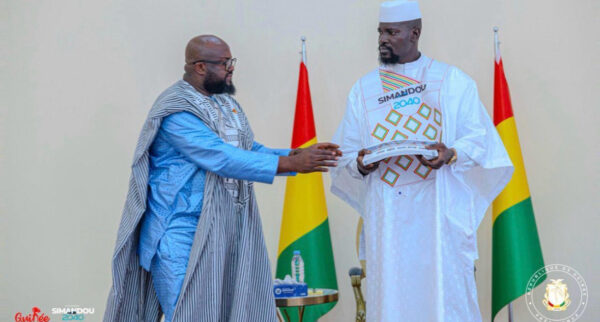Conakry, October 28, 2025 – The Republic of Guinea has officially launched the Simandou 2040 program, a roadmap aimed at structuring the country’s economic transformation around the development of the Simandou iron ore deposit and its associated railway and port infrastructure. The strategic document was handed over to the head of state, General Mamadi Doumbouya, by Djiba Diakité, chief of staff of the Presidency and president of the Simandou Strategic Committee, during a ceremony held at the Mohammed V Palace in Conakry. This initiative follows on from the decision of the Council of Ministers on May 30, 2024, which called for the development of a development framework based on the economic, industrial, and logistical levers of the Simandou project.
According to the authorities, the institutional, legal, and financial conditions of the project have been strengthened in recent months. Key steps include securing the integrated mines-rail-port setup, establishing the TransGuinean Company (CTG) with a 15% public stake, implementing a local content plan outlining national employment and local subcontracting obligations, and obtaining a sovereign rating of B+ with a stable outlook allowing the country to prepare for its gradual reintegration into international capital markets. The period has also seen the creation of the Guinea Sovereign Fund and the launch of “La Guinèfé,” a nation branding initiative aimed at repositioning the country’s economic image.
The program is based on transforming natural resources into productivity, human capital, and industrialization. The authorities have set ambitious infrastructure goals: 2,900 kilometers of highways, 2,500 kilometers of railway lines, and a digital coverage rate aiming for 95% by 2040. This long-term framework is accompanied by commitments to modernize the administration, budget discipline, fight against corruption, and professionalization of security forces – conditions deemed necessary to anchor the credibility of the economy and promote private investment.
The financial aspect of the program involves a total investment of $200 billion over fifteen years, with $65 billion expected to be invested between 2025 and 2030, with a 70% expected contribution from the private sector. A Delivery Unit attached to the Presidency will be responsible for monitoring, coordinating, and controlling the execution to ensure transparency in financial allocation and measure results.
Simandou, considered one of the largest mining projects in the world under development, is the backbone of this strategy. Its exploitation must be accompanied by the construction of the deep-water port of Morebaya and the commissioning of the transnational railway corridor linking the Guinean forest region to the coast. The central challenge is to make this mining project a vector of economic integration, productive upgrading, and diversification, in a context where Guinea intends to reduce its dependence on exports of raw materials and improve the redistribution of national wealth.
The operational phase, expected as early as 2026 with the acceleration of railway and port construction, will be a test of the state’s ability to absorb unprecedented levels of investment, while ensuring regulatory stability, financial rigor, and the upskilling of local workforce. With its financial scale, time horizon, and institutional framework, Simandou 2040 appears as the economic matrix of the post-transition Guinean cycle. Its success will depend on its ability to fulfill its commitments and transform this mining asset into a real lever for sustainable and inclusive development.


